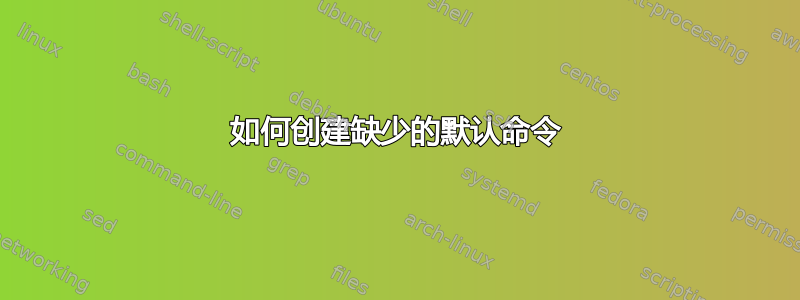
我想创建一个命令,其输入为 $X,t$,输出为 伊[X_t]如果吨给出并输出 前任] 如果吨不见了。
迄今为止
如果我没有条件吨然后
\newcommand{\e}[1]{E[#1]}
有效,但除此之外......我很困惑。
答案1
要允许该语法,您可以使用\@ifnextchar来检查第一个参数后是否有逗号。然而,这是一种可疑的语法,可能会导致不可预测的行为。无论哪种方式,您都不应使用单字母命令名称:
\documentclass{article}
% Option 1:
\makeatletter
\newcommand{\CmdE}[1]{%
E[#1%
\@ifnextchar,{\grab@sub}]}
\def\grab@sub,#1{%
_{#1}]}
\makeatother
\begin{document}
\pagenumbering{gobble}
\begin{tabular}{ll}
\(\CmdE X\) & \(\CmdE {XX}\) \\
\(\CmdE X,t\) & \(\CmdE {XX},t\) \\
\(\CmdE X,{tt}\) & \(\CmdE {XX},{tt}\) \\
\end{tabular}
\end{document}
生成:
我建议使用一种更清晰(且更强大)的语法xparse:
\documentclass{article}
% Option 2:
\usepackage{xparse}
\NewDocumentCommand\CmdE{mo}
{%
E[#1\IfValueT{#2}{_{#2}}]%
}
\begin{document}
\begin{tabular}{ll}
\(\CmdE {X}\) & \(\CmdE {XX}\) \\
\(\CmdE {X}[t]\) & \(\CmdE {XX}[t]\) \\
\(\CmdE {X}[tt]\) & \(\CmdE {XX}[tt]\) \\
\end{tabular}
\end{document}
两种方法的结果相同。
哦,是的,还有简单的 LaTeX 语法:
\documentclass{article}
% Option 3:
\newcommand{\CmdE}[2][]
{%
E[#2%
\if\relax\detokenize{#1}\relax
\else
_{#1}%
\fi]%
}
\begin{document}
\begin{tabular}{ll}
\(\CmdE {X}\) & \(\CmdE {XX}\) \\
\(\CmdE [t]{X}\) & \(\CmdE [t]{XX}\) \\
\(\CmdE [tt]{X}\) & \(\CmdE [tt]{XX}\) \\
\end{tabular}
\end{document}
答案2
通过下面的示例,\CmdE采用一个未分隔的参数并检查该参数的标记之一是否是逗号。
仅在数学模式下使用\CmdE,因为它对逗号周围的空格标记及其参数的其他组成部分不起作用。
\documentclass{article}
\makeatletter
\newcommand\CheckWhetherArgBlank[1]{%
\if\relax\detokenize\expandafter{\@firstoftwo#1{}.}\relax
\expandafter\@firstoftwo\else\expandafter\@secondoftwo\fi
}%
\newcommand\gobbletocomma{}\long\def\gobbletocomma#1,{}%
\newcommand\removecomma{}\long\def\removecomma#1,{#1}%
\newcommand\gobbledot{}\def\gobbledot.{}%
\newcommand\firsttoSelDoM{}\long\def\firsttoSelDoM#1,#2\SelDoM{{#1},}%
\newcommand\keeptillcomma[1]{%
\expandafter\CheckWhetherArgBlank\expandafter{\gobbletocomma#1}{%
\expandafter\gobbledot\removecomma#1%
}{%
\expandafter\keeptillcomma\expandafter{\firsttoSelDoM#1}%
}%
}%
\newcommand\CmdE[1]{%
\expandafter\CheckWhetherArgBlank\expandafter{\gobbletocomma#1,}%
{E[#1]}% no comma
{\expandafter\CheckWhetherArgBlank\expandafter{\gobbletocomma#1}%
{\removecomma E[#1]}% comma but only blankness behind it.
{E[{\keeptillcomma{.#1\SelDoM}}_{\gobbletocomma#1}]}% comma and something other than blankness behind it
}%
}%
% Blankness = Either only explicit space tokens or no tokens at all.
\makeatother
\begin{document}
\begin{verbatim}
\begin{tabular}{ll}
\(\CmdE{X}\) & \(\CmdE{{XX}}\) \\
\(\CmdE{X,t}\) & \(\CmdE{{XX},t}\) \\
\(\CmdE{X, t}\) & \(\CmdE{{XX}, t}\) \\
\(\CmdE{X,{tt}}\) & \(\CmdE{{XX},{tt}}\) \\
\(\CmdE{X, tt}\) & \(\CmdE{XX, tt}\) \\
\(\CmdE{[XX], [tt]}\) & \(\CmdE{[XX], [tt],u}\) \\
\(\CmdE{X,}\) & \(\CmdE{{[XX], [tt]},u}\)\\
\end{tabular}
\end{verbatim}
\begin{tabular}{ll}
\(\CmdE{X}\) & \(\CmdE{{XX}}\) \\
\(\CmdE{X,t}\) & \(\CmdE{{XX},t}\) \\
\(\CmdE{X, t}\) & \(\CmdE{{XX}, t}\) \\
\(\CmdE{X,{tt}}\) & \(\CmdE{{XX},{tt}}\) \\
\(\CmdE{X, tt}\) & \(\CmdE{XX, tt}\) \\
\(\CmdE{[XX], [tt]}\) & \(\CmdE{[XX], [tt],u}\) \\
\(\CmdE{X,}\) & \(\CmdE{{[XX], [tt]},u}\)\\
\end{tabular}
\end{document}
答案3
不同的expl3实现:
\documentclass{article}
\usepackage{xparse}
\ExplSyntaxOn
\NewDocumentCommand{\E}{m}
{
\clist_set:Nn \l_aimblb_e_clist { #1 }
\clist_pop:NN \l_aimblb_e_clist \l_aimblb_e_main_tl
E[ \l_aimblb_e_main_tl % print the main
\clist_if_empty:NF \l_aimblb_e_clist
{
\sb{ \clist_use:Nn \l_aimblb_e_clist { , } }
}
]
}
\clist_new:N \l_aimblb_e_clist
\tl_new:N \l_aimblb_e_main_tl
\ExplSyntaxOff
\begin{document}
Simple: $\E{X}$
With subscript: $\E{X,t}$
More subscripts: $\E{X,t,u}$
\end{document}
这支持更多下标;因为它是免费的,所以我添加了它们。您可能对它们有不同的用法。
经典的实现:
\documentclass{article}
\makeatletter
\newcommand{\E}[1]{\aimblb@E#1,,\@nil}
\def\aimblb@E#1,#2,#3\@nil{%
E[#1\if\relax\detokenize{#2}\relax\else_{#2}\fi]
}
\begin{document}
$\E{X}$
$\E{X,t}$
$\E{X,abcdef}$
Comparing with Ulrich's:
\begin{verbatim}
\begin{tabular}{ll}
\(\E{X}\) & \(\E{{XX}}\) \\
\(\E{X,t}\) & \(\E{{XX},t}\) \\
\(\E{X, t}\) & \(\E{{XX}, t}\) \\
\(\E{X,{tt}}\) & \(\E{{XX},{tt}}\) \\
\(\E{X, tt}\) & \(\E{XX, tt}\) \\
\(\E{[XX], [tt]}\) & \(\E{[XX], [tt],u}\) \\
\(\E{X,}\) & \(\E{{[XX], [tt]},u}\)\\
\end{tabular}
\end{verbatim}
\begin{tabular}{ll}
\(\E{X}\) & \(\E{{XX}}\) \\
\(\E{X,t}\) & \(\E{{XX},t}\) \\
\(\E{X, t}\) & \(\E{{XX}, t}\) \\
\(\E{X,{tt}}\) & \(\E{{XX},{tt}}\) \\
\(\E{X, tt}\) & \(\E{XX, tt}\) \\
\(\E{[XX], [tt]}\) & \(\E{[XX], [tt],u}\) \\
\(\E{X,}\) & \(\E{{[XX], [tt]},u}\)\\
\end{tabular}
\end{document}






